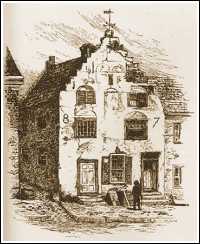A definite End to Company Involvement
Even while the new patentees had complete control over their farms, their farming left much to be desired by the Company. The Company still had its interest in successful exploitation, because it was agreed in the patents that the farmers should pay tithes to the Company annually, as all freeholders in New Netherland had to do after a number of years. But when the first terms expired, no payments were made, and the Company complained that the farmers "made no preparation worth mentioning to improve the land and cultivate it with zeal and industry." Director-general and council warned the farmers to "fence their lands and to till them with all diligence...on pain, if they continue negligent, of being deprived of the lands which will be given to others who regularly pay the quitrent annually."noteFive years later, three of the patentees still appear not to have paid one penny to the Company. On August 25, 1653, Leendert Arentsen, Cornelis Jacobsen Stille and Gerrit Hendricksen appear in the New Amsterdam court to answer complaints about their not paying tithes of the crops according to the patent. The three farmers responded that "on account of short crops and war, they had been heretofore excused...from paying the tithes". Leendert Arentsen said, that he would leave his bouwerij, provided he is paid the moneys he has expended, and confessed that he is indebted to the Company, but did not know how much. At the next court session, the fiscal Cornelis van Tienhoven, who sued the farmers for their default, produced the obligations signed by Arentsen and Stille, proving their debts for 1563 and 789 guilders. The court condemned the two to immediate payment.note
 It is not known if they were ever able to pay, but it is
certain that their financial problems were not over after this
year. When the Overseers of the Fences inspected the fences on
the island of Manhattan in 1656 they found the common fence out
of order in many places, among them the farms of Arentsen and
Stille. Both were condemned to pay one guilder per head of
cattle. Arentsen told the court he was ready to pay but had
nothing but peas, while Stille said he wasn't able to pay, but
promised to settle before the end of the month.The story
of the Company tenants and their financial troubles as
independent farmers after they had acquired patents
automatically raises the question whether private farming on
Manhattan really was a good alternative to Company control.note
It is not known if they were ever able to pay, but it is
certain that their financial problems were not over after this
year. When the Overseers of the Fences inspected the fences on
the island of Manhattan in 1656 they found the common fence out
of order in many places, among them the farms of Arentsen and
Stille. Both were condemned to pay one guilder per head of
cattle. Arentsen told the court he was ready to pay but had
nothing but peas, while Stille said he wasn't able to pay, but
promised to settle before the end of the month.The story
of the Company tenants and their financial troubles as
independent farmers after they had acquired patents
automatically raises the question whether private farming on
Manhattan really was a good alternative to Company control.note
As has been stated, after 1647 the West India Company only possessed on Manhattan the farm leased by Van Twiller, farm no. 1. But not even this largest and best farm could bring much profit to the Company. Van Twiller had in 1642 successfully claimed exemption from paying the sixth sheaf of his crops over the years 1638-1642; an indication that even Van Twiller had not been very punctual in paying his rent. He further was able to get favorable conditions from the Amsterdam directors at the expiration of his lease. He was allowed to dispose of his cattle, movables, slaves, and all that belonged to him.note
